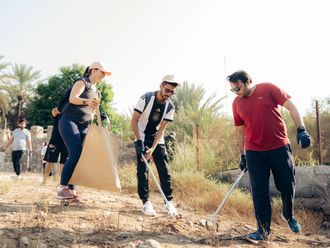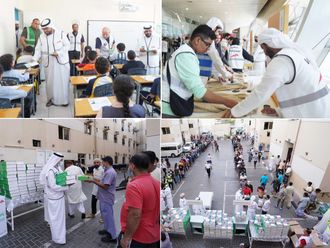
Dubai: For most Dubai denizens, Thursday is probably the favourite day of the week given that it marks the end of the work week.
For emergency responders, Thursdays hold quite a different meaning.
Over the past few years now, Thursdays have become the busiest day for emergency responders, especially paramedics, from 2pm until midnight. Thursday-Friday night areas such as Deira, both sides of the Creek, Dubai Mall, Dubai Marina, and Jumeirah Beach Road are often the places Dubai Corporation for Ambulance Services (DCAS) find hard to access,especially during emergency situations because of heavy traffic congestion.
“There’s probably a higher social life on Thursday evening or something like that so people tend to not go out through the week but will go out at the end of the week. So, there’s a lot more traffic on the road than on most days,” Neil Kirby, DCAS director for operations, told Gulf News.
DCAS has introduced various ways to beat heavy traffic during emergencies in its 68 points of delivery—be it despatching motorcycle ambulances, first responders, or mobile intensive-care ambulances.
In the 88,076 cases that DCAS logged last year, Kirby said that the number of hurdles whilst responding to a callwas relatively small. But, any delay can have a significant effect when it comes to saving a life.
“You can have a hundred motorists that all give way but if there’s one motorist [who] doesn’t, it’s gonna stop us. It only takes one vehicle to be parked where it’s not supposed to be parked and we can’t get through,” he said.
Within seconds of receiving an emergency call, an ambulance has to be on the road as soon as possible, ideally within the first minute.. Any life-threatening emergency needs to be addressed within eight minutes, a standard followed by other big cities worldwide.
“Time matters. We have a goal to get to a life-threatening emergency within eight minutes. Eight minutes isn’t long. So, we want to do that eight minutes safely so we don’t injure or harm anyone in the community,” Kirby said.
For a sudden cardiac-arrest patient, the American Heart Association said a patient’s chances of survival decreases by seven to 10 per cent with each minute that lapses without medical help. Within four to six minutes, the brain gets damaged and death could occur. The likelihood that a heart-attack victim survives becomes almost nil beyond 10 minutes.
The ambulance driver therefore bears a big responsibility in situations like this.
Arriving at the scene within the ideal emergency response time is the goal, but getting there safely takes precedence, Habib Aziz, Ambulance Driver Instructor at DCAS, told Gulf News.
Hence, ambulance drivers are not allowed to cut red signals and disobey traffic rules. Emergency vehicles, under the law, may be fined, too.
In a three-day special training programme, ambulance drivers are taught how and where to properly stop the ambulance, drive at a safe speed, save the paramedics should the need arise, and answer despatches.
But ascareful as they try to be, Aziz said some accidents could still happen.
Crisanto Patalinghug Jr, a DCAS paramedic, was responding to an emergency call in 2004 when 84 cars were involved in a massive pile-up along Abu Dhabi-Dubai highway. While trying to save a critically injured passenger, a car ran over them, knocking them the paramedics 20 metres away from the scene. The passenger died on the spot.
Patalinghug, who suffered from a spinal injury, treated and stabilized his partner before heading to Rashid Hospital.
“It was only until we reached the hospital that I began to realize that I had been injured pretty badly,” Patalinghug said. “I am now living my second life.”
Kirby said the rule of thumb for any emergency situation is for all road users to be alert and assume that there are people in the area.
“When they see an emergency vehicle, make the assumption that there are people around the vehicle—be they medics, be they patients,” Kirby said.
“I can’t predict where traffic problems are gonna be. But people need to apply the same rule every time that they hear a siren to identify where the emergency vehicle is, identify where it’s trying to go and to slow down, not necessarily stop, slow down and make room for it.”














